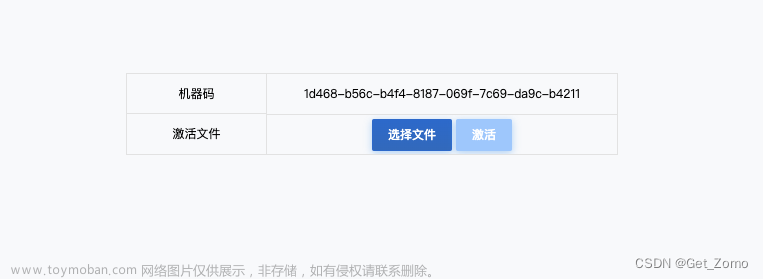DiFi: A Go-as-You-Pay Wi-Fi Access System
Abstract
As video streaming services become more popular, users desire high perceived video quality, which has placed more stringent requirements on the quality of connection. Existing issues of cellular networks encourage users to seek alternative connections such as publicWi-Fi networks; however, expectations of both users and owners of Wi-Fi networks are not sufficiently satisfied and various concerns are yet to be addressed by a better Wi-Fi access system. Based on a go-as-you-pay scheme, we design and implement DiFi, a per-user-based system with dynamic resource allocation and pricing. DiFi offers data burst that accommodates user requirements on the burstiness of traffic, in addition to bandwidth. It better caters to the various individual requirements of users, and better utilizes the limited network resources for the owners.We leverage the blockchain-based smart contract to address realistic concerns on decentralized control, privacy and trustiness and our implementation is compatible with existing Wi-Fi infrastructures.
随着视频流服务的普及,用户对视频感知质量的要求越来越高,这对连接质量提出了更严格的要求。蜂窝网络的现有问题鼓励用户寻求替代连接,例如公共 Wi-Fi 网络;然而,Wi-Fi 网络的用户和所有者的期望并没有得到充分满足,各种问题还有待通过更好的 Wi-Fi 接入系统来解决。基于按需付费方案,我们设计并实施了 DiFi,这是一个基于每个用户的系统,具有动态资源分配和定价。除带宽外,DiFi 还提供满足用户对流量突发性的要求的数据突发。它更好地满足用户的各种个性化需求,更好地为所有者利用有限的网络资源。我们利用基于区块链的智能合约来解决对分散控制、隐私和信任的现实问题,我们的实施是在现有的 Wi- Fi 基础设施基础上完成的。
summary
基于按需付费方案,我们设计并实施了 DiFi,这是一个基于每个用户的系统,具有动态资源分配和定价。
除带宽外,DiFi 还提供满足用户对流量突发性的要求。
更好地满足用户的各种个性化需求,更好地为所有者利用有限的网络资源。
利用基于区块链的智能合约来解决对分散控制、隐私和信任的现实问题
INTRODUCTION
Content delivery services, especially video streaming, have accounted for a significant portion of global Internet traffic [1]. Users desire to smoothly stream videos even at, e.g., a crowded airport. The expectation for high perceived quality of contents has placed strong requirements on the quality of connection. Although cellular network has been evolving, issues such as high cost of data roaming [2] or poor cellular signal [3] still constantly encourage users to seek alternative connections. Users traveling abroad may use mobile hotspot devices such as MiFi [4]; however, issues caused by cellular network still exist. Compared to such a device-based solution, users prefer a device-free software-based solution, e.g., Wi-Fi networks. Typically, a public Wi-Fi network relies on an access system to control and regulate traffic. Users get access to the network via an authentication page and are allocated network resources such as bandwidth, while owners could set prices for Wi-Fi access and make revenue from users via the access system.
内容交付服务,尤其是视频流,已占全球互联网流量的很大一部分 [1]。用户希望即使在拥挤的机场也能流畅地播放视频。对内容的高感知质量的期望对连接质量提出了很高的要求。尽管蜂窝网络一直在发展,但数据漫游成本高 [2] 或蜂窝信号差 [3] 等问题仍然不断鼓励用户寻求替代连接。出国旅游的用户可以使用MiFi等移动热点设备[4];但是,蜂窝网络引起的问题仍然存在。与这种基于设备的解决方案相比,用户更喜欢基于无设备软件的解决方案,例如 Wi-Fi 网络。通常,公共 Wi-Fi 网络依赖接入系统来控制和调节流量。用户通过认证页面接入网络,并获得带宽等网络资源,而业主可以通过接入系统为Wi-Fi接入定价并从用户那里获得收益。
As Wi-Fi is becoming the network performance bottleneck [5], existing systems usually leave expectations of either users or owners unsatisfied. Video streaming users commonly require higher bandwidth. However, users of online conferences are less sensitive to bandwidth but expect fewer “frozen frames”, i.e., lower initial delay, jitter or packet loss, which occurs with longer inter-arrivals of packets [6]. Thus, the ability of accommodating traffic burstiness [7] is also desirable for users. With a proper design to accommodate packets with shorter inter-arrival times, users can benefit from burstiness by temporarily achieving larger throughput beyond the bandwidth constraint set by the system. For the example of video streaming, the initial delay will be reduced, which is an impairment factor of user perceived video quality [8]. Furthermore, Wi-Fi owners desire to improve resource utilization so as to better monetize their existing infrastructures and earn more revenues.
由于 Wi-Fi 正在成为网络性能瓶颈 [5],现有系统通常无法满足用户或所有者的期望。 视频流用户通常需要更高的带宽。 然而,在线会议的用户对带宽不太敏感,但期望更少的“冻结帧”,即更低的初始延迟、抖动或数据包丢失,这会随着数据包的到达间隔时间延长而发生 [6]。 因此,适应流量突发的能力[7]也是用户所希望的。 通过适当的设计来容纳更小延迟的数据包,用户可以通过暂时实现超出系统设置的带宽限制的更大吞吐量来从突发性中受益。 对于视频流的示例,初始延迟将减少,这是用户感知视频质量的一个损害因素[8]。 此外,Wi-Fi 所有者希望提高资源利用率,以便更好地将现有基础设施货币化并获得更多收入。
Most existing systems treat all users identically, e.g., free Wi-Fi at shopping malls, under which users have to share the same connection quality. Some systems [9], [10] manage to differentiate users at class levels. Users are at least divided into free and premium classes, and could experience better quality
in terms of faster speed by paying to enter the premium class. Nonetheless, such class-based systems are coarse-grained and static. First, connection qualities are only differentiated at class level. Second, each class has fixed resources associated with fixed pricing plans. As the average quality varies with the number of users in a class, users cannot get guaranteed quality. A user will simply stop paying if the desired quality declines, causing revenue loss for owners due to lower utilization of bandwidth resource. To a limited extent, we can leverage the pay-as-you-go scheme from cloud computing [11], [12] to improve the class-level design. Similar to popular services such as Amazon EC2 [13], users select from multiple available configurations of resources. Finer granularity allows per-user resource allocation. The second issue is partially solved with resource isolation [14], i.e., users can receive guaranteed quality. Users pay for resource usage per unit time, and the pricing scheme may be either static or dynamic [15].
大多数现有系统对所有用户一视同仁,例如,在商场免费 Wi-Fi 下,用户必须共享相同的连接质量。一些系统 [9]、[10] 设法在班级级别区分用户。用户至少分为免费版和高级版,可以体验到更好的质量
通过付费进入高级舱,速度更快。尽管如此,这种基于类的系统是粗粒度和静态的。首先,连接质量仅在类级别上有所不同。其次,每个类别都有与固定定价计划相关的固定资源。由于平均质量随班级的用户数量而变化,因此用户无法获得质量保证。如果期望的质量下降,用户将简单地停止支付,由于带宽资源的利用率较低而导致所有者的收入损失。在有限的范围内,我们可以利用云计算 [11]、[12] 中的pay-as-you-go方案来改进类级设计。与 Amazon EC2 [13] 等流行服务类似,用户可以从多种可用资源配置中进行选择。更精细的粒度允许按用户分配资源。第二个问题通过资源隔离[14]部分解决,即用户可以获得有保证的质量。用户为每单位时间的资源使用付费,定价方案可以是静态的也可以是动态的[15]。
Per-class resource allocation and fixed pricing of classbased systems can be improved by per-user but fixed resource allocation and dynamic pricing of pay-as-you-go systems, however they both do not suffice to address the existing issues. We propose a better design with per-user dynamic resource allocation and dynamic pricing, referred to as go-asyou- pay. To accommodate user requirements for burstiness, we offer data burst as a new type of resource, i.e., a volume of data with no bandwidth constraint in the short run. Users can indicate various individual requirements on the desired bandwidth and data burst, and the system attempts to allocate resources subject to the real-time demand of users. The prices are also dynamically adjusted based on user demand. Dynamic pricing [16] could attract more users with lower prices when available resources are abundant, and prevent service degradation due to excessive demand with raised prices. As a result, the experienced connection quality will be dependent on the amount that a user is willing to pay, which explains the name go-as-you-pay. User requirements will be better satisfied, andowners can also better utilize the resources.
基于类的系统的按类资源分配和固定定价可以通过pay-as-you-go系统的按用户固定资源分配和动态定价来改进,但是它们都不足以解决现有问题。我们提出了一个更好的设计,每用户动态资源分配和动态定价,称为按需付费。为了满足用户对突发性的需求,我们提供数据突发data burst作为一种新型资源,即短期内没有带宽限制的大量数据。用户可以对期望的带宽和数据突发指示各种个性化的需求,系统根据用户的实时需求尝试分配资源。价格也根据用户需求动态调整。动态定价 [16] 可以在可用资源丰富时以较低的价格吸引更多用户,并防止由于价格上涨导致的过度需求导致服务质量下降。因此,体验的连接质量将取决于用户愿意支付的金额,这解释了“按需付费”的名称。用户的需求会得到更好的满足,业主也可以更好地利用资源。
In order to achieve the go-as-you-pay design, we have to address the principal challenges, i.e., dynamic allocation andpricing at user level. First, we need to provide interfaces for users to interact with the system, e.g., to indicate requirements for Wi-Fi access. Second, we expect a mechanism that effectively allocates resources and charges users for resource usage. Auction mechanisms [17], [18] that allocate resources proportional to user demand and charge users according to their willingness-to-pay inspire our design. Last, owners desire that resources could be fully utilized for more potential revenue. We integrate a feedback mechanism that adjusts the allocation to more sufficiently utilize the resources. Challenges also exist in implementation. DiFi can be independently deployed on each Wi-Fi router/access point. As a system running in a distributed manner at the edge of the Internet, centralized control may lack efficiency and flexibility. Meanwhile, users desire better privacy and data ownership, and also expect to trust the system for following certain rules in allocation and pricing. Owners, on the other hand, hope to reduce the cost of deploying a new system for more revenue. We find out that the blockchain-based smart contract is able to address all these challenges, hence we leverage it in our implementation
为了实现按需付费设计,我们必须解决主要挑战,即用户级别的动态分配和定价。首先,我们需要为用户提供与系统交互的接口,例如,指示对 Wi-Fi 访问的要求。其次,我们期望一种有效分配资源和向用户收取资源使用费的机制。拍卖机制 [17]、[18] 根据用户需求按比例分配资源并根据用户的支付意愿向用户收费,这激发了我们的设计。最后,业主希望能够充分利用资源以获得更多潜在收入。我们整合了一个反馈机制,调整分配以更充分地利用资源。实施中也存在挑战。 DiFi 可以独立部署在每个 Wi-Fi 路由器/接入点上。作为在互联网边缘以分布式方式运行的系统,集中控制可能缺乏效率和灵活性。同时,用户期望更好的隐私和数据所有权,也期望信任系统在分配和定价方面遵循一定的规则。另一方面,业主希望降低部署新系统的成本以获得更多收入。我们发现基于区块链的智能合约能够解决所有这些挑战,因此我们在实施中利用它
In summary, we design and implement DiFi, a go-as-youpay Wi-Fi access system with dynamic resource allocation and pricing on a per-user basis. We leverage the blockchain-based smart contract in implementation. Experimental evaluation reveals that DiFi is able to outperform existing systems in terms of the experience of users and utilization of bandwidth. We expect that DiFi will bring more benefits over existing Wi-Fi infrastructures by addressing the various requirements.
总而言之,我们设计并实施了 DiFi,这是一种按需付费的 Wi-Fi 接入系统,具有基于每个用户的动态资源分配和定价。 我们在实施中利用基于区块链的智能合约。 实验评估表明,DiFi 在用户体验和带宽利用率方面能够超越现有系统。 我们预计,DiFi 将通过满足各种需求,为现有的 Wi-Fi 基础设施带来更多好处。
Summary
蜂窝网络一直在发展,但数据漫游成本高 [2] 或蜂窝信号差
公共 Wi-Fi 网络依赖接入系统来控制和调节流量。用户通过认证页面接入网络,并获得带宽等网络资源,而业主可以通过接入系统为Wi-Fi接入定价并从用户那里获得收益。
视频流用户通常需要更高的带宽。
在线会议的用户对带宽不太敏感,但期望更少的“冻结帧”,即更低的初始延迟、抖动或数据包丢失,
- 适应流量突发的能力。 通过适当的设计来容纳更小延迟的数据包,用户可以通过暂时实现超出系统设置的带宽限制的更大吞吐量,
- Wi-Fi 所有者希望提高资源利用率。
用户至少分为免费版和高级版这种基于类的系统是粗粒度和静态的。
带宽资源的利用率较低而导致所有者的收入损失。
可以利用云计算 [11]、[12] 中的pay-as-you-go方案来改进设计。
- 用户可以从多种可用资源配置中进行选择。更精细的粒度允许按用户分配资源。
- 第二个问题通过资源隔离[14]部分解决,即用户可以获得有保证的质量。用户为每单位时间的资源使用付费,定价方案可以是静态的也可以是动态的[15]。
为了满足用户对突发性的需求,
我们提供数据突发data burst作为一种新型资源,用户可以对期望的带宽和数据突发指示各种个性化的需求
系统根据用户的实时需求尝试分配资源。价格也根据用户需求动态调整。动态定价 [16] 可以在可用资源丰富时以较低的价格吸引更多用户,并防止由于价格上涨导致的过度需求导致服务质量下降。因此,体验的连接质量将取决于用户愿意支付的金额,这解释了“按需付费”的名称。
为用户提供与系统交互的接口,例如,指示对 Wi-Fi 访问的要求。
拍卖机制 [17]、[18] 根据用户需求按比例分配资源并根据用户的支付意愿向用户收费。
业主希望能够充分利用资源以获得更多潜在收入。我们整合了一个反馈机制,调整分配以更充分地利用资源。文章来源:https://www.toymoban.com/news/detail-464435.html
我们发现基于区块链的智能合约文章来源地址https://www.toymoban.com/news/detail-464435.html
- 更好的隐私和数据所有权,系统合理的分配和定价。
- 降低部署新系统的成本以获得更多收入。
到了这里,关于DiFi: A Go-as-You-Pay Wi-Fi Access System 精读笔记(一)的文章就介绍完了。如果您还想了解更多内容,请在右上角搜索TOY模板网以前的文章或继续浏览下面的相关文章,希望大家以后多多支持TOY模板网!











